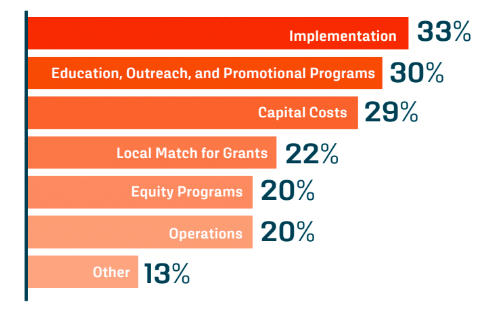A new report tracking the growth of shared micromobility across North America has found that ridership hit a record high in 2023 with at least 172 million trips.
This is the North American Bikeshare and Scootershare Association’s (NABSA) fifth annual ‘state of the industry report’.
Across 421 cities in North America, 87.4 million trips (51%) were taken on docked bikes, 15 million (9%) were on dockless bikes and 69.8 million (40%) were on e-scooters.
Powering these trips were 280,000 vehicles spread out across the region.
Total shared micromobility vehicles deployed across North America decreased slightly in 2023 while the number of trips continued to rise, meaning that fleets generally had more rides per vehicle per service day.
“The NABSA Shared Micromobility State of the Industry Report demonstrates, year-over-year, the important role and impact that shared micromobility is making in communities across North America, ridership continues to reach all-time highs, yet it remains largely underfunded with public dollars,” Sam Herr, Executive Director of NABSA, told Zag Daily.
“There is money that can be spent from the federal, state, provincial, and local level on shared micromobility, if it is prioritised to do so. In recent years, places such as the San Francisco Bay Area and Hamilton, Ontario among others have made these important investments, and we hope to see more of this.”
Agencies provided financial support in the following categories across North America:

Tom Nutley, Chief Revenue Officer at global micromobility software company Urban Sharing, believes public agencies are starting to increase their financial investment in shared micromobility services as they increasingly become viewed as public transport.
“The European model of public money supporting the capital expenditure for new, replacement or expansion of shared micromobility services has started to gain traction in the US, in part due to the opportunity to utilise Biden’s infrastructure bill, and transit agencies recognising micromobility for what it is – a public transit mode.
“Seeing that 20% of this public investment is now going towards ongoing operations of the system is fantastic to see given the difficulty operators face in running these systems, especially considering the ever rising costs of vehicle rebalancing, recharging and maintenance/repair.”
From an environmental standpoint, the report found that shared micromobility offset approximately 37 million kilograms of CO2 emissions by replacing auto trips.
NABSA said its report confirms shared micromobility as an essential part of multi-modal mobility strategies that are necessary to get people where they need to go now and into the future.




